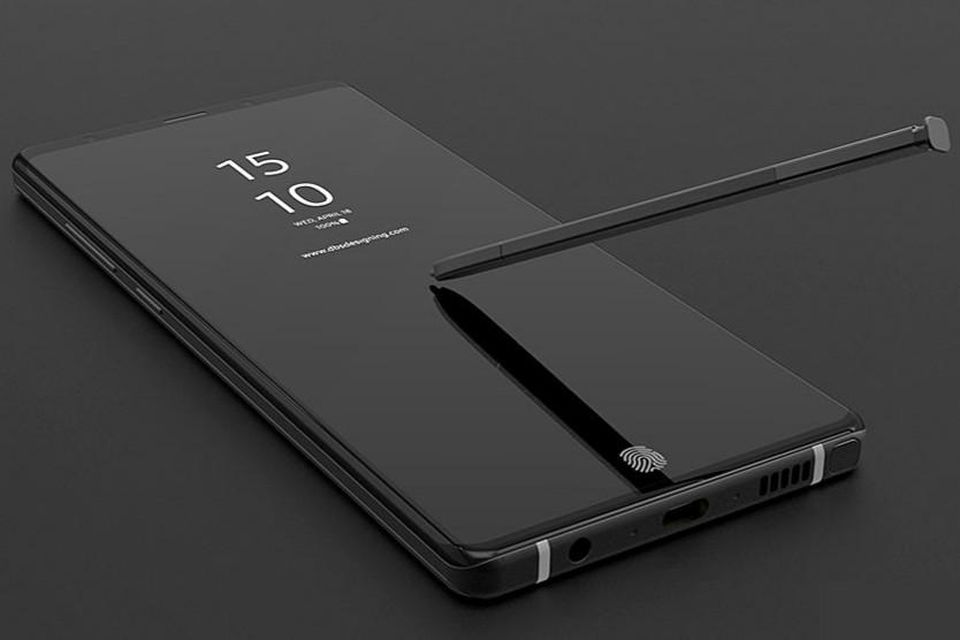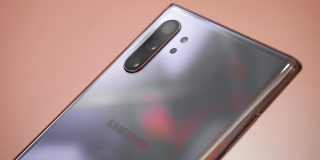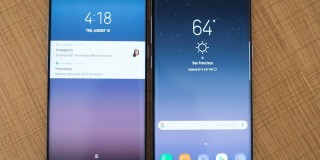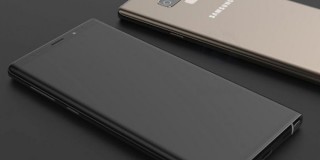How Does Galaxy Note 9 Upgrade From The Galaxy Note 8

For those who have been eagerly waiting for the Galaxy Note 9 it is now official. And on initial inspection, it appears Samsung has made some notable changes from the Galaxy Note 8. On an initial inspection, you might think that that there are similar changes to the ones on the Note 8. While there’s some truth to this, you only need to look closer and see the huge upgrades lurking behind the eye-watering asking price.
Galaxy S9 Giant Display – The Biggest Ever Samsung’s Biggest Screen
Although this may not be a huge leap, but the Galaxy Note 9 features the biggest display Samsung has ever fitted into a mass market smartphone. In comparison to the Galaxy Note 8, this is how the Note 9 fairs;
- Galaxy Note 9 – Corning Gorilla Glass 5, 6.4-inch, 83.4% screen-to-body ratio, 18.5:9 aspect ratio, 1440 x 2960 pixels (516 ppi pixel density), HDR10 compliant, Super AMOLED
- Galaxy Note 8 – Corning Gorilla Glass 5, 6.3-inch, 83.2% screen-to-body ratio, 18.5:9 aspect ratio, 1440 x 2960 pixels (521 ppi pixel density), HDR10 compliant, Super AMOLED
Besides this, the other takeaways are a fractionally higher screen-to-body ratio. This is largely due to minimally thinner bezels. Also there is a slightly lower pixel density, thanks again to Samsung retaining the same native resolution on the larger display. It is doubtful that anyone would be able to spot these differences.
While Samsung hasn’t divulged any details about panel upgrades, we can expect the display to be even brighter with more color precision when compared to the superb Note 8.
Size And Design Differences Of The Samsung Galaxy Note 9
Give someone the Galaxy Note 8 and Galaxy Note 9 and it would be difficult for many people to differentiate them. However, it is possible they would notice the slight increase in size and weight:
- Galaxy Note 9 – 161.9 x 76.4 x 8.8 mm/6.37 x 3.01 x 0.35 in) and weighs 201g or 7.01 oz.
- Galaxy Note 8 – 162.5 x 74.8 x 8.6 mm /6.40 x 2.94 x 0.34 in) and weighs 195g or 6.88 oz
It is no longer surprising that smartphones get to get thicker and heavier but these are just minor differences. More so when you consider the larger display.
Besides the dimensional differences, Samsung Galaxy Note 9 sets itself apart with the inclusion of the stereo speakers. What is even better is that these speakers have a tuning of KG with Dolby Atoms branding.
The fingerprint sensor is also more sensibly positioned below the rear cameras. This is a similar move Samsung made with the Galaxy S9.
Another notable improvement is the bright yellow S Pen. This is the first time Samsung has equipped the S Pen with Bluetooth LE. The feature enables far greater functionality, such as, a clicker during presentations, music playback control and remote shutter operation for the camera. You can also charge the new S Pen automatically from the Galaxy Note through a supercapacitor. This ensures it is always ready and drains very little battery from the phone itself.
Cameras – Samsung Doubles Down
The Galaxy Note 9 features the same hardware as the Galaxy S9 Plus. This means dual 12MP rear cameras with a primary dual aperture lens which shifts between F2.4. This allows for more details in well-lit shots. There is also the F1.5 for low light compared to the Note 8 standard F1.7 sensors.
No changes are noted on the secondary module. This remains a 2x optical zoom, though elsewhere the Huawei has managed 3x optical zoom with its impressive P20 Pro.
Galaxy Note 9 Dual Rear Cameras And The Re-Positioned Fingerprint Scanner
In addition to everything else to this point, the Galaxy Note 9 camera hardware is unchanged from the Note 8 which brings our focus to the focus to the phone’s new image processing. According to Samsung, Note 9 has advanced ever since the Galaxy S9. Although given that the Galaxy S9 is still easily beat by Google’s 2017 Pixel 2 there is substantial ground to make-up.
Samsung’s ‘Dual Aperture’ Camera Concept
An aspect that Samsung has really improved from the Note 8, is the addition of the Galaxy S9’s ‘Intelligent Scan’ facial recognition software. While there are faster Face IDs such as the iPhone X, this is still a useful addition.
The Storage King
Samsung Galaxy Note 9 has a boost over the recent S9’s with its gigantic internal storage. This is also a meaningful upgrade compared to the Note 8.
- Galaxy Note 9 in Europe and Asi – Exynos 9810 (4x 2.8 GHz Mongoose M3 & 4×1.7 GHz Cortex-A55 CPUs), Mali-G72 MP18 GPU
- Galaxy Note 9 in the US- Qualcomm Snapdragon 845 octa-core chipset (4x 2.7 GHz Kryo 385 Gold & 4×1.7 GHz Kryo 385 Silver CPUs), Adreno 630 GPU
The Note 8 used Qualcomm’s Snapdragon 835 which is 20% slower and 30% less power efficient than the new 845. Samsung has also boosted RAM from the Note 8’s 6GB to 8GB, but only if you buy the (hugely expensive) top-of-range option (more below).
Water Carbon Cooling System On Galaxy Note 9
Interestingly, Samsung has added a ‘Water Carbon Cooling system’ to the Galaxy Note 9. This should stop it from throttling under pressure which is common when playing games. That is going to be put to test when Note 9 launches with a brief Fortnite exclusive.
Another aspect is the connectivity upgrade. The Galaxy Note 9 has LTE Cat.18 compared to Cat.16 on the Note 8. This means it is theoretically capable of 1.2 gigabit (1,200Mbit) 4G speeds, but this is of little relevance given its never attainable in real-world scenarios.
Long Lasting Battery Life – The Big Selling Point
Samsung was taken aback in recent years following the exploding Galaxy Note 7 debacle. Since then Samsung is finally on its game again with the Galaxy Note 9. This major upgrade could be a deal-maker for many potential buyers.
- Galaxy Note 9 – 4000 mAh
- Galaxy Note 8 – 3300 mAh
It is notable that indeed Samsung has increased battery capacity by over 20%. The giant tech company promises that a single full charge will take you not just full day but multi-day use.
Furthermore, the Galaxy Note 9 retains quick wired charging and wireless charging. The phone has passed Samsung’s ‘8 Point Quality Check’ making it the most rigorous in the industry. This was introduced after the Galaxy Note 7 was recalled. This also means that unlike other models that degrade batteries for over 20% in only a couple of years, the Galaxy Note 9 batteries should degrade only 5%.
Price And Storage – Big Increases, Everywhere
If you are eager on the performance, you should pay head to the price. Now here is where Samsung might lose you:
- Galaxy Note 8 – 128GB – $999 / £899
- Galaxy Note 9 – 512GB – $1,250 / £1,099
It is likely, both prices will make you wince. The Galaxy Note 9 now starts at the same price as the iPhone X. Although it’s a top-tier model itis the most expensive mass-market smartphone.
For that price you get an enlarged 128GB and class-leading 512GB storage options. The latter also gives you 8GB of RAM. With a 512GB-compatible micro SD slot, many users would prefer a 64GB $899 option. That was the Note 8 storage and approximate price bracket upon its launch.
Early Verdict On Galaxy Note 9
You can be sure there is a lot of package in the Galaxy Note 9. A lot more than there was in the Note 8. The obvious downside might be the price but there is also the fact that Samsung tends to fall behind smaller handset makers such as Vivo and Oppo. These manufacturers have delivered true bezel-less, notch-less designs this year for a lot less price tag.
Enough said, there is little doubt that the Note heritage continues to live on in the Galaxy Note 9. Everything about it is big, whether you mention the price, storage, battery life and display. The Note fans know there is nothing quite like this stylus-totting phone on the market which gives Samsung a rare case of a captive audience.
Popular opinion is that Samsung expects to discontinue the Note series if it does not exceed expectations. There is a general fear that this beast of a smartphone might be the last of its kind.
















